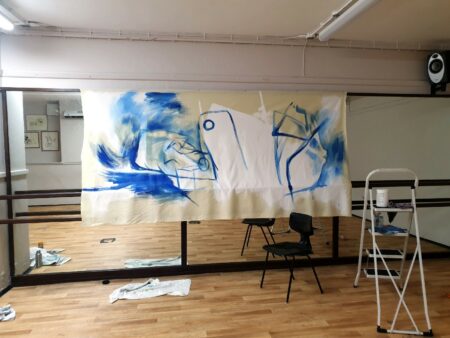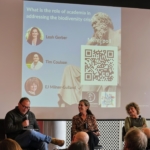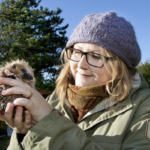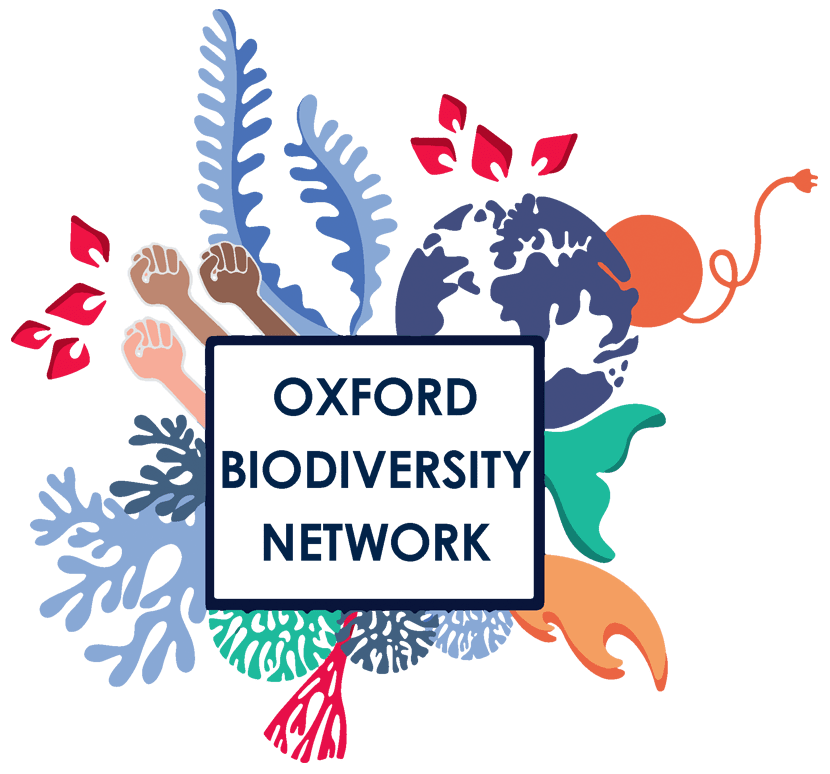Working at the crossroads of art and science

Art can be an effective way of communicating scientific research. It can connect people from different backgrounds, stimulate discussion, and produce knowledge and understanding. Moving beyond the written word can make research more accessible and help scientists to think about the key messages and meaning of their work. Incorporating visual methods into research design can also facilitate dialogue, providing a means of expression for research participants to share their stories and experiences.
With recognised benefits, collaborations between artists and scientists are encouraged. For example, the Art, Biodiversity and Climate (ABC) Network brings together artists and scientists to explore how we interact with nature and the ways in which we manage natural resources. The ABC Network was launched in 2021 and receives funding from TORCH – The Oxford Research Centre in the Humanities.
This year, ICCS joined the ABC Network and partnered with Antonia Jameson, a student at the Ruskin School of Art, to examine conservation issues relating to marine and aquatic environments. Over the last five months, both artist and ICCS members have attended regular workshops focused on interdisciplinary working and have organised group discussions on a host of research topics including drivers of illegal behaviour; the conservation of sharks and rays; and, social and ecological dimensions of human-made reefs. During these conversations, connections were made between different areas of research and cross-cutting themes such as participation, values, relationships and resilience were identified. These conversations provided an opportunity for individuals to learn from one another, and share thoughts and ideas on how environmental challenges may be addressed.
Over time, ideas about how research could be communicated visually started to emerge. These ideas revolved around the concept of marine protected areas – a conservation tool used to prevent resources from being overexploited and habitats from being degraded. Further discussions on managing trade-offs between conservation and human well-being helped refine ideas and led to the development of an interactive piece of art that explores the social implications of marine protected areas. Featuring laser technology and incorporating video and audio footage of underwater landscapes captured whilst undertaking fieldwork, the artwork will be exhibited on Friday (5th November) at the Oxford University Museum of Natural History. All are welcome.

Beginning stages of the painting.
Personal reflections
Participating in this art-science collaboration has been an exciting and thought-provoking experience. From a scientific perspective, it has cemented my view that adopting an artistic lens can help raise awareness of environmental issues and can be a useful way of framing ‘wicked’ problems. Art, however, embodies a multitude of forms and while it can and should be used to illustrate scientific research, it has the potential to create experiences in ways that prompt people into taking positive action.
As a fine artist, immersing myself in the conservation world was novel in comparison to my experience within the bubble of art school. Over the course of this collaboration, we maintained a creative process that was free-flowing and generative. Frequent conversations led to the highlighting of common ground among researchers. The interdisciplinary nature of ICCS provides a fertile space to explore complex socio-ecological issues, and the installation created is multi-faceted and designed to reflect this. I wanted to utilise not just the visual sphere, but the gallery space itself to turn the art piece into an experience. The work encourages the audience to consider how their physical actions and even mere presence can affect their surroundings.
This interactive vision was made possible by the generosity of Stephen McGibbon, a computer programmer who helped convert conceptual thinking into technological output. Collaboration continues to be central in my practice and I hope to move beyond the echo-chamber of the art school and encounter new audiences by inhabiting scientifically driven spaces.
Find out more about the NHM event on Friday 5th November here: Cop26 Creative Climate Conversations with Artists and Scientists | Oxford University Museum of Natural History
Other recent stories




